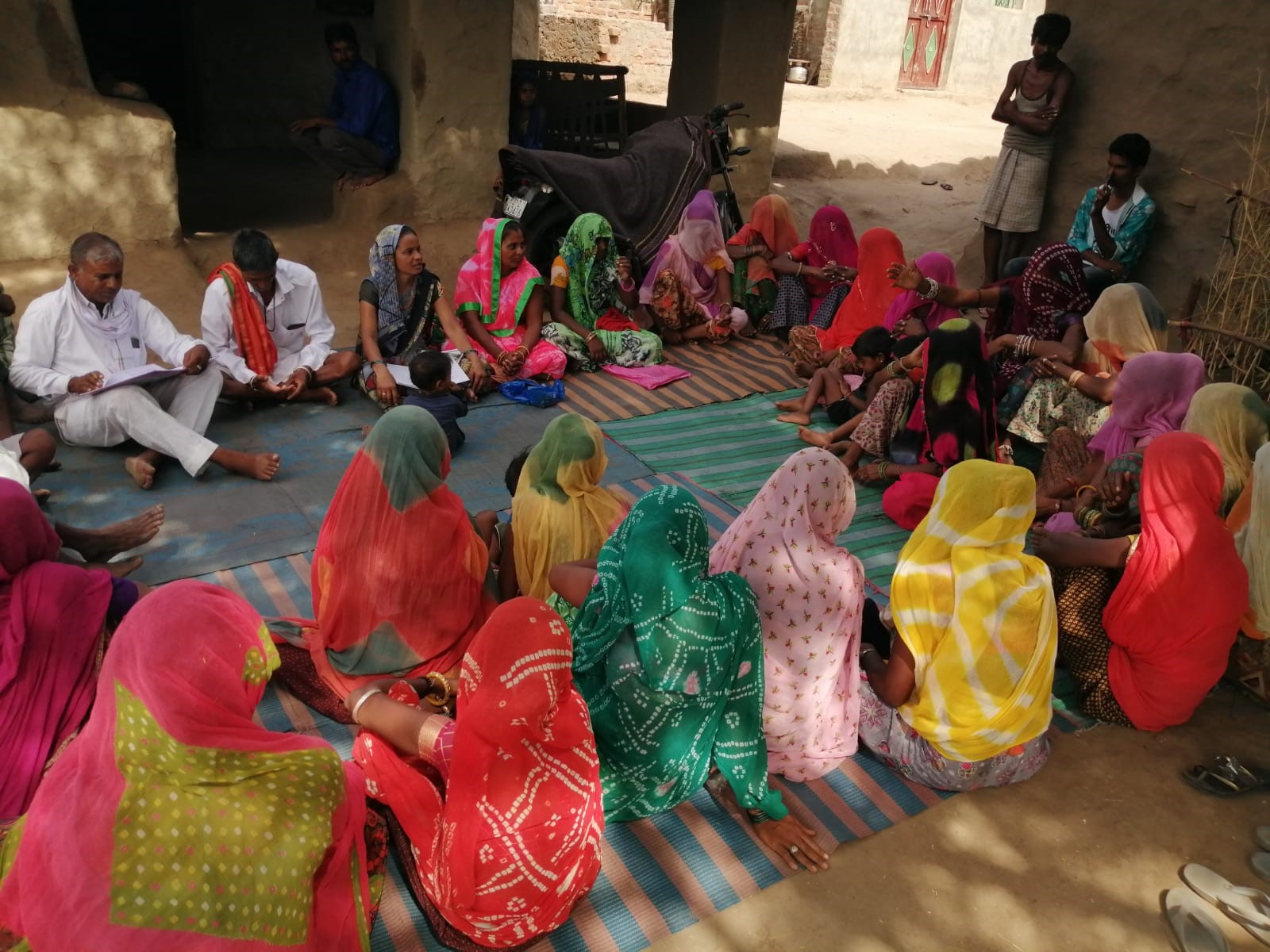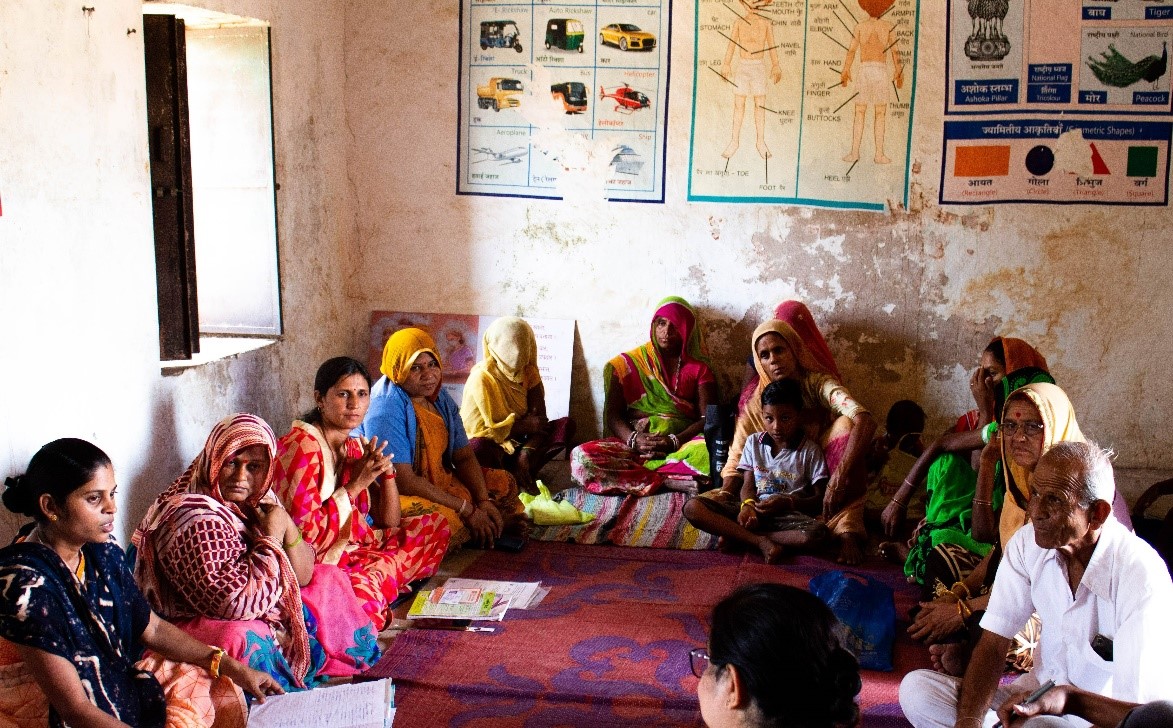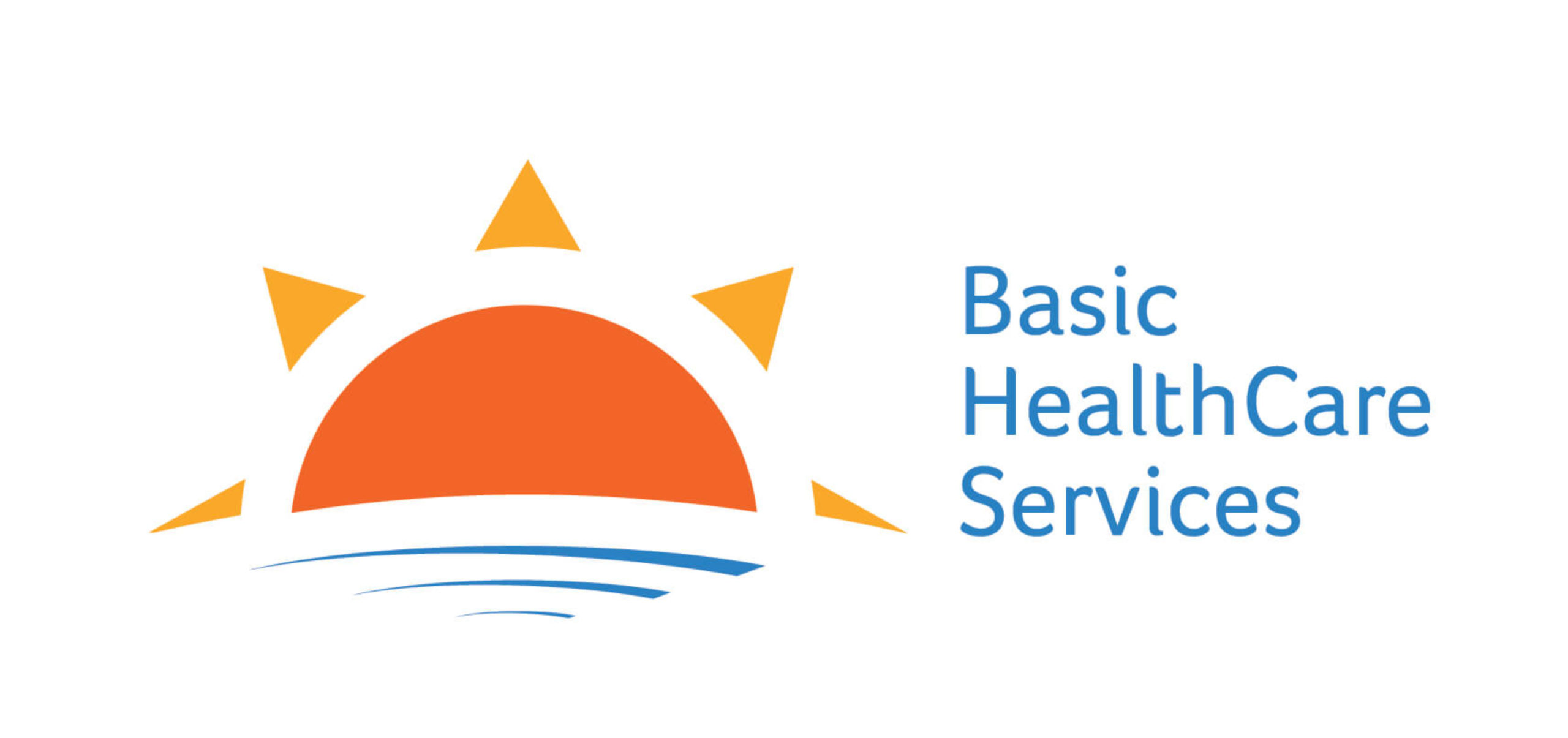Written by Jaspreet Tuteja, Officer, Centre for Healthcare, IIM Udaipur

With a vision to decentralize the health planning, the National Health Mission (NHM) proposed the creation of VHSCs (Village health and sanitation committee) at revenue villages of each block of the district in 2005. In the year 2011, Nutrition was also included within the ambit of VHSC and thus the name changed to VHSNC.
VHSNC is formed at the village level to take collective action on issues related to health including malnutrition, clean and safe drinking water, healthy living conditions, health education, and awareness. The VHSNC serves as an inspiring village organization that brings the community together for collective action on health. This can be done by identifying volunteers from the community and utilizing their support for organizing cleaning drives, improving village sanitation, and vector control. The committee also acts as a grievance redressal forum on health and nutrition issues. The committee should have a minimum of 15 members
Steps for the process of formation of the committee
- The ASHA and ASHA Facilitator (or Block Mobilizer) will hold meetings in the village to discuss the composition of the VHSNC and its role.
- The Gram Panchayat members, ASHA, ASHA facilitator (or Block Mobilizer) and ANMs will then select members through a consultative process with the community at the village level.
- This list will be ratified with the inclusion of further suggestions at the next Gram Sabha meeting.
- The ANM, AWW (Anganwadi worker) and ASHA along with the Panchayat members are expected to ensure that every section is represented. 50% of total members of VHSNC must be women. SC, ST and minorities should be adequately represented as per their population in the village.
Key principles Governing the Composition of the VHSNC
- Elected members, especially women members of the panchayat residing in the village should be enabled to lead, such as women ward-panch.
- All those working for health or health-related services should be able to participate, such as the ANMs and the Anganwadi workers.
- The voices of service users of health services, especially of mothers should find a place.
- There should be representation from all community sub-groups, especially from poorer and more vulnerable sections.
- All habitations/hamlets should have representation.
- Ideally, the medical officer and block development officer should participate in every VHSNC meeting, or at least once or twice a year.
- Representatives of existing community-based organizations such as Self Help Groups, Forest Management Committees, Youth Committees, any prominent NGO working in the community, committees on School Education, Water and Sanitation or Nutrition should also become a member of these committees.
- The Chairperson of the VHSNC is a woman elected member of the gram panchayat (panch) preferably from among the SC/ST communities, who is a resident of that village. If there is no woman panch from that village, then preference should be given to any panch from the SC/ST. But this is decided by the gram panchayat and VHSNC, with the ANM and ASHA playing a facilitating role.
- ASHA will play the role of convenor/Member-Secretary of VHSNC. ASHA has been assigned this important role as she has better community ownership and acceptance. She belongs to the community and is knowledgeable about health. For successful achievement of her objectives related to health promotion, prevention and community mobilization, the ASHA also requires an active VHSNC

Monthly Meetings
The VHSNC functions through meetings. Therefore, at least one meeting should be convened every month. It is through the meetings that the VHSNC monitors and plans for health. It is a platform for taking and initiating action, to identify, discuss the problems, and plan for ways to mitigate them. The meeting also serves as an important platform for service providers to learn about the gaps from the community feedback.
Maintaining the VHSNC records
- Maintain a record of meeting with minutes and attendance of participants
- Record expenses done by the committee
- Bank passbook
- VHSNC Statement of Expenditure
- Village health register
- Public services monitoring tool and register
- Birth and death register
Facilitating Service Delivery and Service Providers in the Village
- Organizing the Village Health and Nutrition Day (VHND) and support in immunization sessions. VHSNC members should facilitate mobilization of pregnant women and children, particularly from marginalized families and support the ANM, AWW and ASHA in conducting the VHND.
- Create awareness about nutritional issues, the inclusion of Nutritional needs in the Village Health Plan, identify locally available foodstuffs of high nutrient value that can be encouraged for use by the families of malnourished children.
- Facilitate early detection of malnourished children in the community; tie-up referral to the nearest Malnutrition treatment centre (MTC)as well as follow up for sustained outcome.
- VHSNC should act as a medium to allow outreach workers and community health workers to articulate their problems and provide support in overcoming their challenges. The meetings should identify the sections/hamlets of the community where the ANM, Anganwadi worker, the school teacher and the ASHA are unable to reach and help these CHWs to reach those sections/hamlets.
- Help in providing important amenities missing in the Anganwadi Center or Sub-Center or School.
- Learn about the gaps in services from the community feedback and possible gaps from the provider feedback and act as a platform for dialogue and action.
- Support ambulance service by organizing local tie-ups with vehicle owners to transport a patient to the hospital in time of need.
- Undertake registration of births and deaths and ensure that a birth certificate is issued by the appropriate authority and reaches the family within the given time standard. All deaths too should be followed by the issuance of a death certificate, including for still births.
- The VHSNC should focus on the cause of death and reporting such causes, as this is likely to form the basis for village planning.
- Information on any maternal death, child death and any outbreak should be immediately provided to the Sub center ANM/PHC Medical officer.
Community Monitoring of Healthcare Facilities
- Monitor health care services in primary and secondary health care facilities. Fill scorecards for health facilities and visit PHCs and HSC for monitoring and dialogue with service users to understand key issues and gaps related in service delivery and quality of care.
- Organize Jan Samvads, forums for dialogue between the community and the authoritie,s and also perform the task of grievance redressal.
Other public services monitored by VHSNC are:
- MNREGA
- PDS
- Mid-day meals at schools.
- AWC services: Supervise the functioning of Anganwadi Centre (AWC) in the village and facilitate its work in improving the nutritional status of women and children.
- Access to clean toilets
- Access to safe drinking water
Thus, the VSHNCs perform a key role in improving the health and wellbeing of the community through prioritizing, through collective action, and through demanding services from various government agencies.
